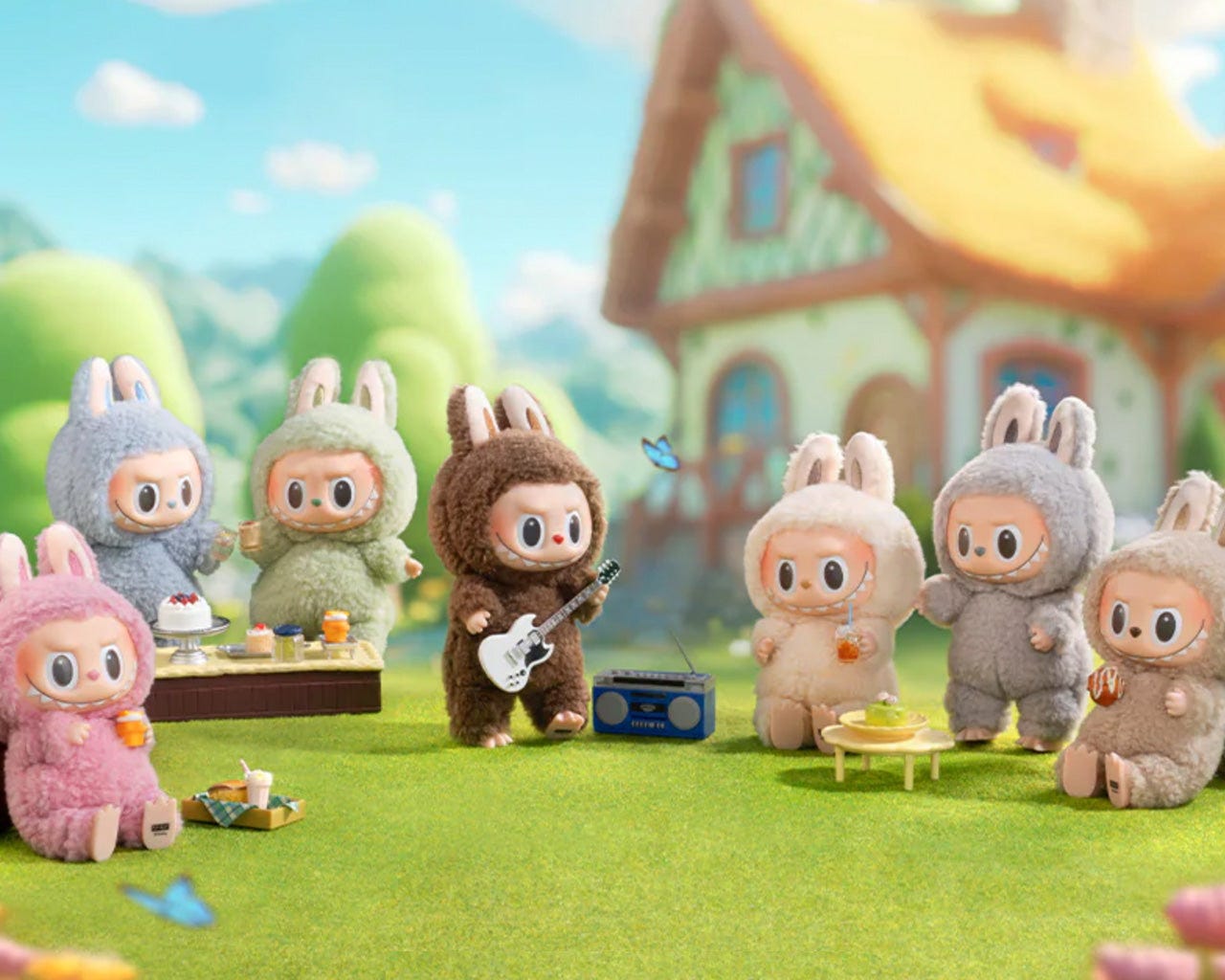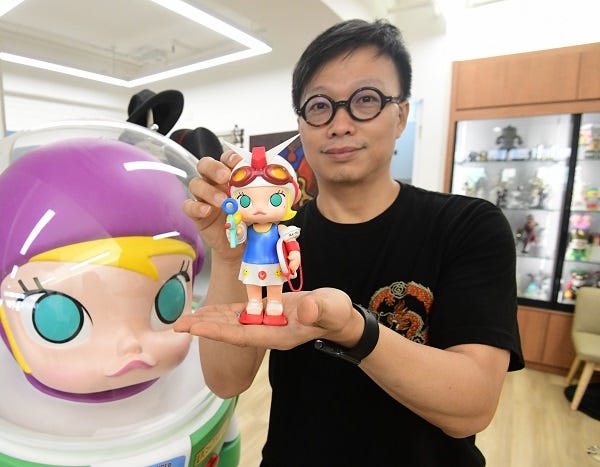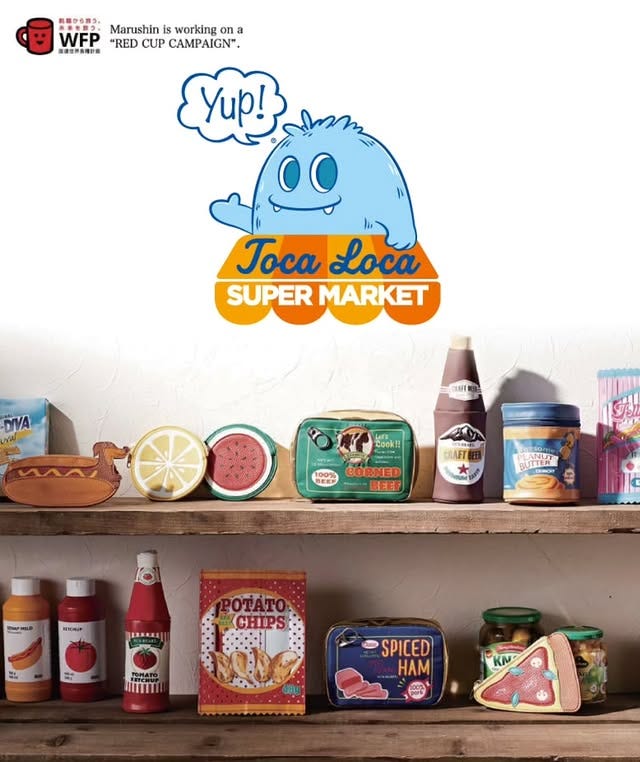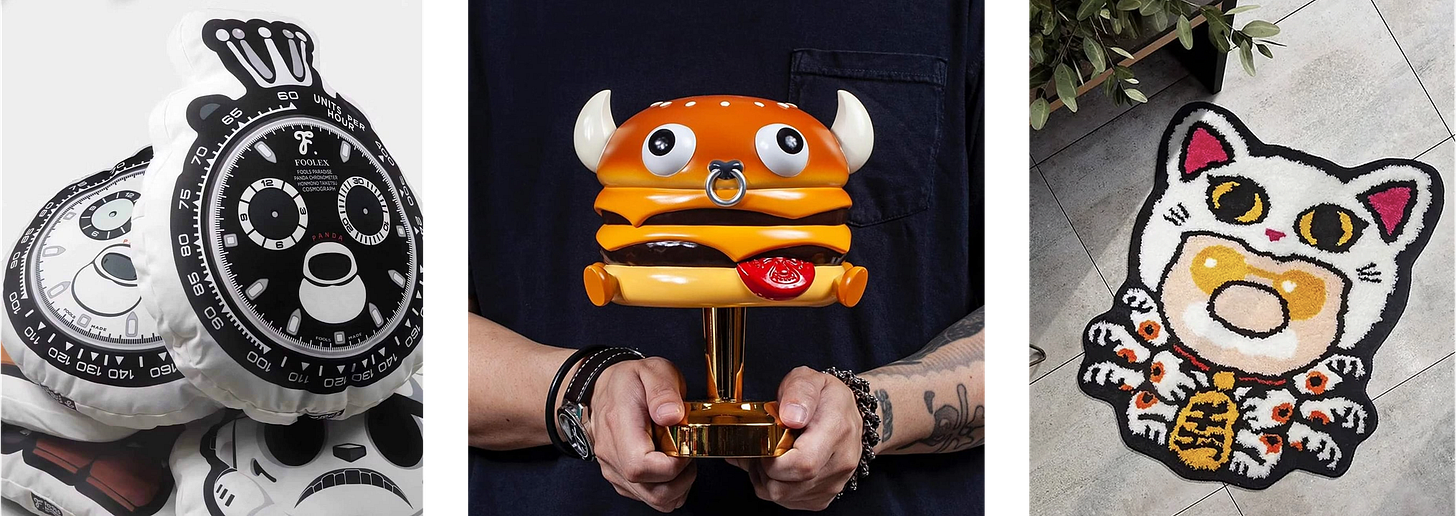The World After Labubu
In a city long dominant in the global toy market, one shift is impossible to ignore: Everything is becoming a toy.
It’s been a killer year for toys: Blythe dolls, jellycats, and of course, the Labubu.
In case this sharp-toothed bunny-like gremlin hasn’t yet appeared in your social media feed, let me get you up to speed: sold by Chinese brand POP MART, Labubu is currently the world’s hottest toy. Designed by artist Kasing Lung over a decade ago, it shot into the mainstream in 2024 when BLACKPINK member Lisa shared Instagram stories of herself with the Labubu: as a plush toy in one and as a keychain strapped to her handbag in another. “I go crazy,” Lisa later explained in a Vanity Fair video. “It’s like I spent all my money [on these toys].”
Since then, Labubu has been seen with celebrities like Rihanna, Dua Lipa, and Kim Kardashian and purchased by hundreds of thousands of adults. Yes, really: The toy’s description specifically states that it’s “Not suitable for persons under 15.” And coverage in various mainstream outlets like Business Insider and The New York Times points to the fact that it’s twenty- and thirty-year-olds, not children, spending their disposable income on these toys—and they’re spending in large sums.
Even in a consumer market suffocated by tariffs, POP MART has become a huge financial success: the company’s revenue jumped by over 165% in the first quarter of 2025 and as of writing in mid-May, its stock has more than doubled year-to-date.
The elephant in the room here is that there’s something ominous about grown adults spending unprecedented sums of money on Labubu. As with any fad with this much widespread appeal, there is a larger cultural force at play here. In The Guardian, Van Bahman theorizes that Labubu offers “a retreat into an illusion of childhood simplicity, [and an escape from] the complexities that presently overwhelm our adult world.” Toys hold nostalgic value, they offer comfort in an unpredictable world, and are an affordable alternative to luxury spending when the cost of living continues to rise. As the world teeters towards recession and downward mobility, POP MART’s plushies soothe the growing sense of malaise.
It’s also worth remembering that whenever mainstream publications like The Guardian or The New York Times report a trend, chances are, said trend is reaching its fever pitch. When the Labubu hype inevitably dies down and we realize these gremlin plushies have overstayed their welcome in the zeitgeist, what will come next?
I like to think that Hong Kong acts close to ground-zero for many toy trends before they’re swallowed into the mainstream. Many popular toy designs come from Hong Kong. Labubu, for example, was actually designed by Cantonese artist Kasing Lung, who was born in Hong Kong. Kenny Wong, who designed Molly, another bestselling POP MART toy, is another toy artist from the city whose designs have achieved mainstream appeal.
Hong Kong government officials have since begun scrambling to capitalize on local toy IP, but the city’s role in the international toy market is not a new phenomenon. In the mid-1980s, Hong Kong was the world’s number one exporter of toys and dolls (in terms of total value). Closer to today, “Seventy percent of global toy products are made by Hong Kong-run companies,” one executive told the BBC in 2021. And while POP MART might be headquartered in Beijing, it’s listed in Hong Kong’s Hang Seng Index.
There’s something about the city that induces fertile ground for innovative, high-quality consumer products. Hong Kong’s streets are densely packed with stores. Retail rent is sky high. And cheaper alternatives available on Alibaba and Taobao eat up mediocre products for lunch. If a consumer brand is surviving, you know for sure that it’s fighting tooth and nail to stay alive.
In Hong Kong, one of the world’s toy capitals, everything is becoming a toy.
A new launch by Hong Kong-based toy seller Toca Loca1 is hinting at a pivot in the local toy industry. In May 2025, Toca Loca launched “Edible Wearables,” a collection of pouches and small bags shaped like grocery store items. The store in Hong Kong’s central district is designed exactly like a supermarket: there are racks of fake fish in fake cold ice, baskets of fake vegetables, an array of fake cakes and pastries, and shelves filled with fake snacks, canned goods, and condiments. “What you see is all things that you need every day in a supermarket,” Catherine Pun, Toca Loca’s owner, told THE CHOW. “But [they’re] turned into something very fun — all little pouches or bags.”
The cuteness you find in Labubu still lives in “Edible Wearables.” Everything is docile and round, colors are pastel and disarming. And when I visited the store on Sunday, only two out of the 100 or so people there were children. Of course, selling child-like products to adults is by design. “We believe that everyone has an inner child,” Pun added. “People miss childhood or times when they were still young. That’s what we want to bring back.”
Similarities with Labubu aside, “Edible Wearables” expand the function of cuteness beyond toys and into functional objects people might use. Pun says that Toca Loca is “developing more products to add more fun to everyday life. We’re making cushions, petrol lamps, and more lifestyle products.” Even since last year, toy lamps, rugs, and cushions have been on sale at Toca Loca: you can buy a burger-styled bedside light, a Mario-esque welcome mat, and a throw pillow with an anime-like watch face.
The vision, it seems, is for everything in your house to be toy-like. But what does it mean when everything becomes a toy? Remember that the Labubu catered to our real discomfort with reality. So when the world’s toy capital is expanding cuteness to different functions, it means that our desire for escape through toys is increasing and our childhood nostalgia will now permeate into other parts of our lives. The big-eyed, sharp-toothed Labubus have reached the apex of their popularity, but the anxieties they’re hinting at may only be starting to reach the surface.
To clarify, Toca Loca is more a seller/curator of toys. Many of their toys on sale are by Hong Kong brands, such as Fool’s Paradise.









